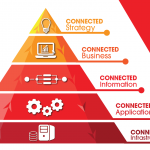By Cat Yong
According to Cognizant’s VP of Technology Practice, Yoosuf Mohamed, many organisations are still in the era of customer contact centers, where support is provided in a reactive mode when customers reach out to the organisations with their problems, and receive fixes.
The Support Halo paradigm addresses and overcomes these shortcomings by leveraging information not just from in-house CRM and support systems, but also from social forums and device analytics. Leading support organisations are using meaning mined from Support Halo to recode support processes and deliver more profound, positive and increasingly delightful customer experiences.
Yoosuf said, “In fact, post-sales support is fast emerging as the key competitive advantage for staying relevant and winning market share.”
Traditional shortcomings
The VP also said, the shortcomings that Support Halo wants to address stem mainly from traditional support, which focuses only on customer contact and fixing the issue.
Yoosuf explained, “It does not take into account a holistic approach or customer sentiment. The support is more transactional and the important KPIs tracked include customer satisfaction (CSAT), average handle time, average turnaround time, and average time-to-resolution.
“Traditional support involves analysis of customers and support issues based on the data from in-house CRM and support systems.”
Support Halo improves the customer experience in every support interaction. For instance, when the customer calls, the support team is ready with analytical data around the history of the reported problem, potential reason(s) for the current call, their business priorities, product features, and usage patterns.
This helps in call personalisation and ensures better call resolution.
Challenges
Providing uniform customer experience using multiple channels is a challenge.
Yoosuf said, “One key challenge is that the customer data is not reused and repurposed to create a delightful experience. Instead, the same data is repetitively gathered and customers are largely unaware of which support agent they would interact with.
These days, customers move fluidly across call centers, IVR systems, social media queues, online chats and emails — and they expect customer support to do the same.
Yppsuf said, “So, effecting a change in the mindset of support organisations to shift from reactive to proactive support is another challenge.”
Integration of support processes and IT systems for uniform messaging and a single customer view need to be addressed on priority.
The Chief Support Officer
Creating the role of a Chief Support Officer to bring executive management focus to the support function is important.
Yoosuf pointed out that support needs to be viewed as a revenue-enabling function rather than a cost center.
Chief customer and support officers are important because they are in best position to consider how they can generate client insights and feed them into product development, sales and marketing.
Yoosuf said, “Through this model, we can go a step further and enable call router intelligence, based on interactions resulting in customer delight. Integrating data analytics, feature usage patterns and historical problem patterns thus provides predictive analytics to support agents and helps them to provide better customer service.”








